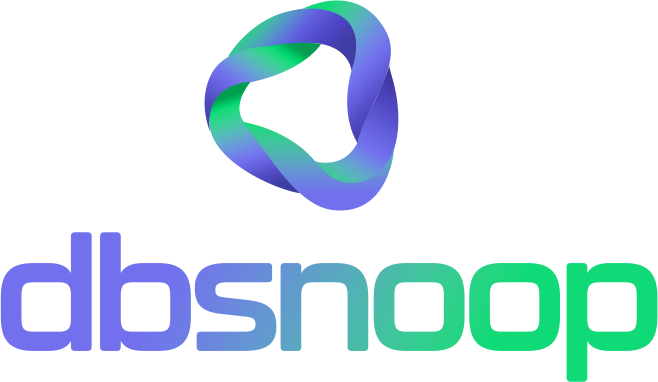
Managing multiple relational databases simultaneously, such as MySQL, SQL Server, and PostgreSQL, presents unique challenges due to the differences in their architectures and SQL languages. Database administrators (DBAs) often need to juggle these differences while ensuring optimal performance, which can be a daunting task. This article explores these challenges, provides strategies for identifying and resolving poor queries, and demonstrates how dbsnOOp Flightdeck can streamline this process.
Architectural Differences and SQL Variations
MySQL
- Architecture: MySQL uses a storage engine architecture, with InnoDB being the most commonly used engine. It supports ACID transactions and foreign keys.
- SQL Syntax: MySQL has its own set of SQL extensions, such as the LIMIT clause for limiting results and specific date functions.
SQL Server
- Architecture: SQL Server follows a single storage engine architecture with integrated features like SQL CLR for running .NET code. It provides robust tools for data warehousing and analytics.
- SQL Syntax: SQL Server has unique features like the TOP clause for limiting results, MERGE statements for UPSERT operations, and different date/time functions.
PostgreSQL
- Architecture: PostgreSQL is known for its advanced features like support for JSONB, rich indexing options, and extensibility. It adheres closely to SQL standards.
- SQL Syntax: PostgreSQL has its own set of extensions, including advanced window functions, array handling, and recursive CTEs.
Managing Multiple Instances
Imagine an environment with the following instances:
- 2 MySQL instances
- 2 PostgreSQL instances
- 2 SQL Server instances
In such a setup, managing and optimizing queries across these databases can be challenging due to the different architectures and SQL dialects.
Identifying Poor Queries
- Query Performance Monitoring:
- Logs and Metrics: Each database has its own logging mechanisms. For example, MySQL uses the slow query log, SQL Server uses the Extended Events or SQL Server Profiler, and PostgreSQL uses the pg_stat_statements extension.
- Challenges: Manually reading logs from different databases is time-consuming and error-prone.
- Analyzing Query Performance:
- Execution Plans: Each database has a different way of presenting execution plans, making it difficult to standardize analysis.
- Resource Usage: CPU, memory, and I/O usage metrics vary across databases, complicating the identification of bottlenecks.
- Deciding on Optimizations:
- Rewriting Queries: Sometimes, queries need to be rewritten to optimize performance. This requires understanding the specific SQL dialect and optimization techniques for each database.
- Adding Indexes: In other cases, adding indexes can resolve performance issues. Identifying the correct indexes to add requires a deep understanding of the database schema and query patterns.
The Role of dbsnOOp Flightdeck
dbsnOOp Flightdeck can significantly simplify the process of managing multiple relational databases by consolidating poor query information into a single, convenient dashboard.
- Unified Query Monitoring:
- Real-Time Monitoring: Flightdeck provides real-time monitoring of all queries across MySQL, SQL Server, and PostgreSQL instances, making it easy to identify performance issues as they occur.
- Consolidated Logs: It aggregates logs from all database instances, presenting them in a standardized format for easier analysis.
- Comprehensive Analysis:
- Historical Data: Flightdeck maintains historical running statistics, allowing DBAs to track query performance over time and identify long-term trends.
- Query Plans: It provides detailed query plans for each database, helping DBAs understand the execution flow and identify inefficiencies.
- Locks and Deadlocks: The platform offers visibility into locking issues, showing which queries are causing contention.
- Optimization Recommendations:
- Automated Suggestions: Flightdeck offers automated recommendations for query optimization, including suggestions for rewriting queries and adding indexes.
- Cross-Database Insights: By providing insights across different database technologies, Flightdeck helps DBAs apply best practices consistently.
Estimating Time Savings
Let’s estimate the time savings for a DBA managing 6 database instances (2 MySQL, 2 PostgreSQL, and 2 SQL Server).
Manual Process:
- Log Reading: On average, a DBA might spend 2 hours per instance per week reading and analyzing logs. For 6 instances, this equals 12 hours per week.
- Optimization Efforts: Identifying and implementing optimizations might take an additional 2 hours per instance per week, totaling another 12 hours per week.
- Total Weekly Time: 24 hours per week.
- Annual Time: 24 hours/week * 52 weeks/year = 1,248 hours/year.
With dbsnOOp Flightdeck:
- Log Reading and Analysis: Consolidated logs and automated analysis might reduce this time by 75%, saving 9 hours per week.
- Optimization Efforts: Automated suggestions and historical insights could reduce optimization time by 50%, saving 6 hours per week.
- Total Weekly Time Saved: 15 hours per week.
- Annual Time Saved: 15 hours/week * 52 weeks/year = 780 hours/year.
- In the USA, this could represent savings of 780 hours, equivalent to USD 39,000.00, considering a rate of USD 50.00 per hour.
Managing multiple relational databases, such as MySQL, SQL Server, and PostgreSQL, presents significant challenges due to differences in architecture and SQL syntax. Identifying and optimizing poor queries can be time-consuming and complex. dbsnOOp Flightdeck simplifies this process by providing a unified dashboard that consolidates query performance data, offers detailed analysis, and provides optimization recommendations. By using Flightdeck, DBAs can save substantial time and effort, leading to more efficient database management and improved overall performance.
Give it a try for 14 days, no burocracy, no credit card
Learn more about Flightdeck!


